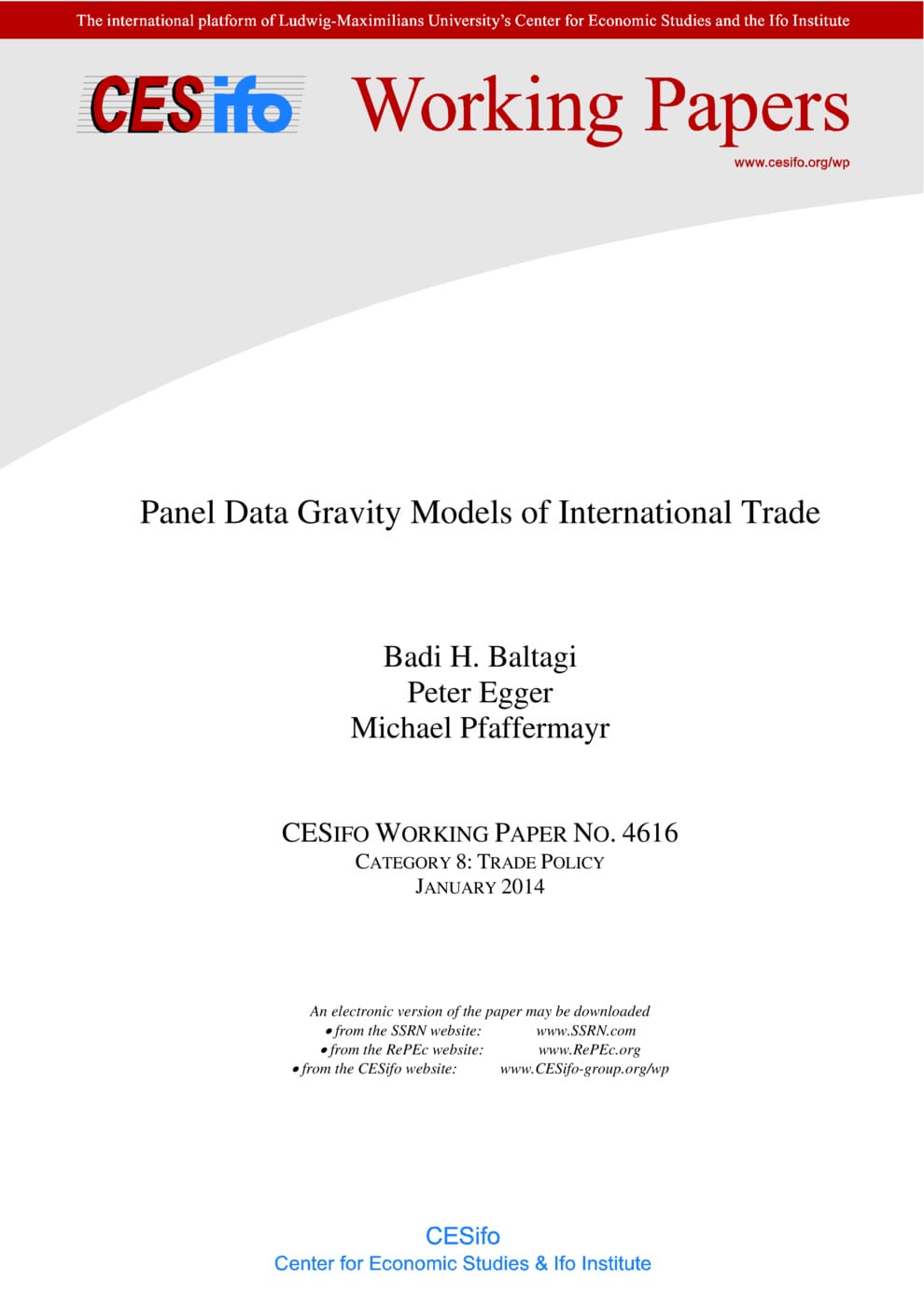Panel Data Gravity Models of International Trade
CESifo, Munich, 2014
CESifo Working Paper No. 4616

One of the oldest and largest literatures in empirical economics is concerned with the estimation of demand and supply of goods, services, and factors across national or subnational borders (see Leamer and Levinsohn, 1995). The respective empirical models specified and estimated are often referred to as gravity models, accruing to their functional-form similarity to Newton’s law of gravity in physics. As Newton’s model, gravity models of international trade or factor flows are (at least) double-indexed, involving a region or country of origin and a region or country of destination. Pooling such demand equations across pairs or regional units or even across cross-sectional units and time inevitably leads to a panel data structure of the data. This chapter is concerned with a host of issues that arise with the estimation of such models, respecting their panel econometric generic structure. The issues covered range from the estimation of double-indexed versus higher-indexed models, the estimation of fixed effects versus random effects models, issues of endogeneity, of approximation, estimation with missing or zero trade flow data, structural versus reduced-form estimation, the role of dynamics or cross-sectional dependence, and issues with specific applications.
Trade Policy
Empirical and Theoretical Methods